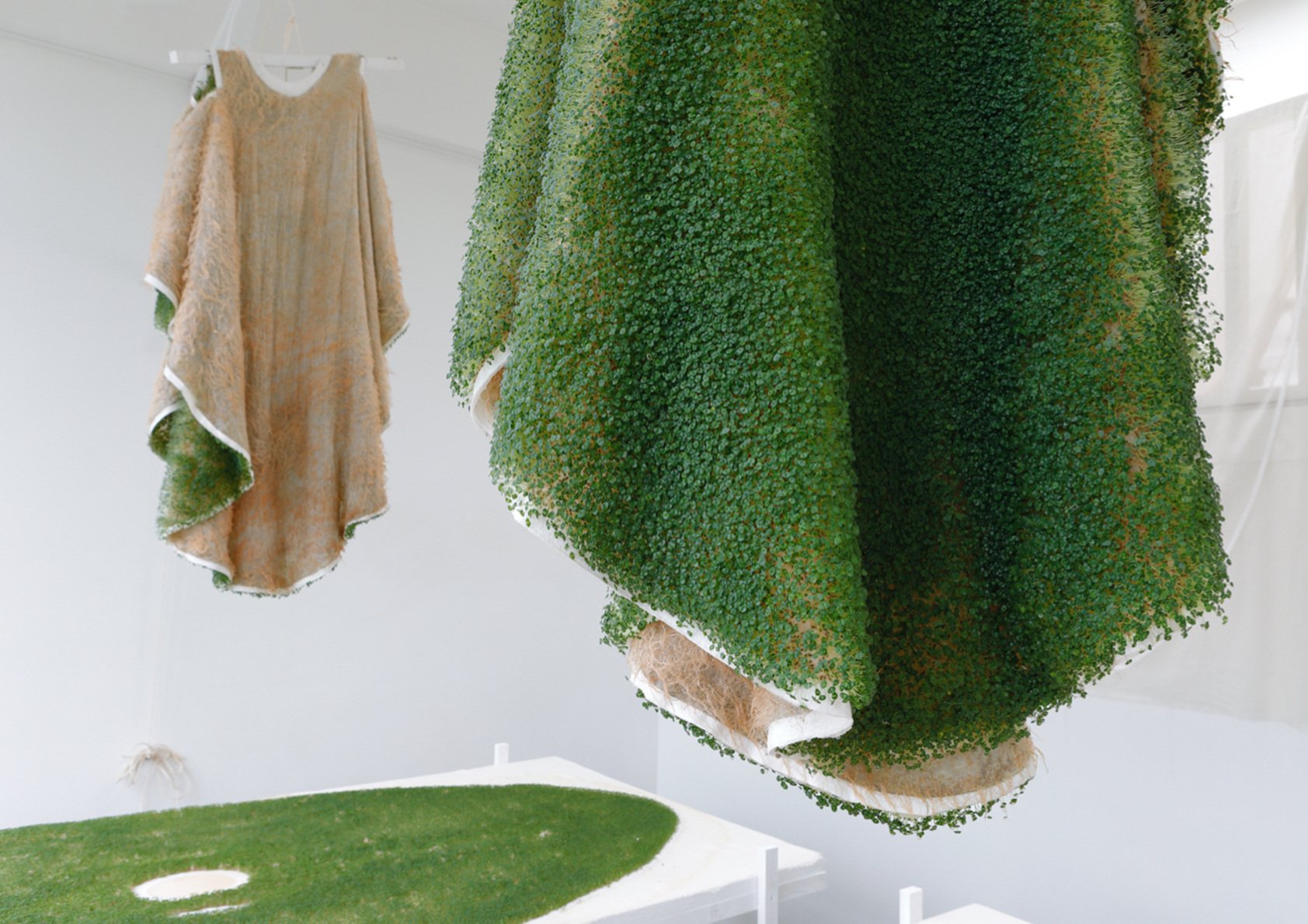Dasha Tsapenko
Growing Couture: Crafting Garments and Objects with Living Organisms
Project - Cutting Edge Beans | Photography Maria Kytaieva
In a world where fashion design often seems a universe away from the fields of agriculture, the profound connection between these two distinct realms can be easily overlooked. Yet, on closer inspection, the interplay between the threads of fashion and the roots of agriculture reveals a significance paramount for our planet's future.
Agriculture silently but firmly moulds the very fabrics that drape our bodies. Natural fibres, like cotton, linen, and hemp – are born from the soil. The alliance between fashion and agriculture transcends mere materials.
In an era driven by ethical consciousness, fashion goes beyond aesthetics. The clamour is not just for organic but for materials birthed from regenerative farming. As we inch towards a circular fashion economy, embracing sustainable agricultural products becomes imperative. This ensures garment longevity, waste reduction, and a decisive step towards ecological responsibility.
For a future that marries style with sustainability, the symbiotic relationship between fashion and agriculture deserves recognition and celebration. Together, they can create a sustainable, luminous future through shared innovation, mutual respect, and an unwavering dedication to our planet.
Central to this fusion is Ukrainian designer Dasha Tsapenko. Based in The Hague, Netherlands, her Atelier Dasha Tsapenko is a testament to a bio-based fashion vision. Here, textures and materials are not produced; they grow. In collaboration with living organisms such as fungi and plants, Dasha's atelier blurs the lines between a microbiology lab and a traditional farm. Fascinated by nature and its non-human inhabitants, Dasha uses natural cycles and rhythms as guiding principles and frameworks for design. Inspired equally by fashion and agriculture, the atelier crafts from overlaps, be it textile dyes from crop residuals or textiles from regional plants and fungal felt. Atelier Dasha Tsapenko isn't solely about crafting garments; it's dedicated to nurturing regenerative systems.
Project - Grain Loves Rain. | Photography Romy Finke, Dasha Tsapenko
Dasha's journey of merging fashion with living organisms has been a progressive tale of innovative projects. Starting in 2019-2020, she unveiled the "Grain Loves Rain" project, reflecting her commitment to the environment. This project wasn't just about creating wearable nature-adapted pieces for wet climates; it was a testament to the intricate balance of our ecosystem, illustrating a delicate, mobile habitat that demands care and nurture.
Building on this philosophy, in 2021, the "Fur_tilize" project was introduced, marking a significant departure from conventional fashion. It represented a vision for a future where clothing isn't static but undergoes growth and transformation. Fur_tilize presented a speculative prototype of a fashion concept aimed at enhancing value, with a garment evolving through various stages of growth, yielding both materials and sustenance. Five grown fur coats exemplify five distinct life-use cycles of a single garment, emphasizing the mutual support among different species and the consequent increase in the item's value over time. A hemp fiber mat serves as the foundation, and each cycle involves the introduction of fungi and legumes, enabling the cultivation of food within the garments. This innovative initiative underscores the belief in the harmonious coexistence of various life forms, elevating the intrinsic worth of garments throughout their existence.
Project - Fur_tilize | Photography Hanneke Wetzer
In 2023, Dasha expanded her creative horizons with the "Cutting Edge Beans" project. This initiative emerged from a blend of her Ukrainian roots and Dutch cultural influences, bringing to the forefront the "Groninger Weekschil," a cherished dried bean from the northern Netherlands, harmoniously paired with "Gunya Kozovannya," an exceptional hand-weaving craft from western Ukraine. But this project was more than just a fusion of cultures; it was a renaissance of the humble bean pod, seamlessly blending historical legacy with regenerative creativity.
The tradition of "knipselbonen" (dried beans), a method of preserving beans in their pods for consumption during harsh winters, had nearly disappeared, with only a handful of Dutch farmers preserving it due to its demanding nature. With a creative nod to this heritage, Dasha reimagined these beans, crafting them into intricate textiles that became the centerpiece of her designs. The resulting collection featured handcrafted coats that served as a visual narrative of the bean pods' journey, whether air-dried, prepared as food, or symbiotically grown with mycelium.
In conclusion, Atelier Dasha Tsapenko lights the way toward a regenerative future where fashion and agriculture converge as vital pillars. Dasha's visionary approach to bio-based living materials research showcases how these seemingly distinct domains can harmoniously unite in a symbiotic dance of innovation and sustainability.
Project - Fur_tilize | Photography Hanneke Wetzer
Project - Cutting Edge Beans | Photography Maria Kytaieva
Project - Cutting Edge Beans | Photography Maria Kytaieva
Project - Cutting Edge Beans | Photography Maria Kytaieva
INFO
FEATURED DESIGNER & RESEARCHER
Dasha Tsapenko
https://atelierdashatsapenko.com/
Instagram @dashatsapenko__
Projects
Grain Loves Rain - Video
Photocredits: Romy Finke, Dasha Tsapenko
Fur_tilize - Video
In collaboration with Han Wösten (Microbiology Research Group, UU Utrecht)
Photocredits: Hanneke Wetzer
Cutting Edge Beans
Collaborators: Han Wosten, Parisa Yousef Doust, Malica Ferments
Photocredits: Maria Kytaieva
Stimuleringsfonds Creatieve Industrie - Talent Program
Words
Nina Zulian







